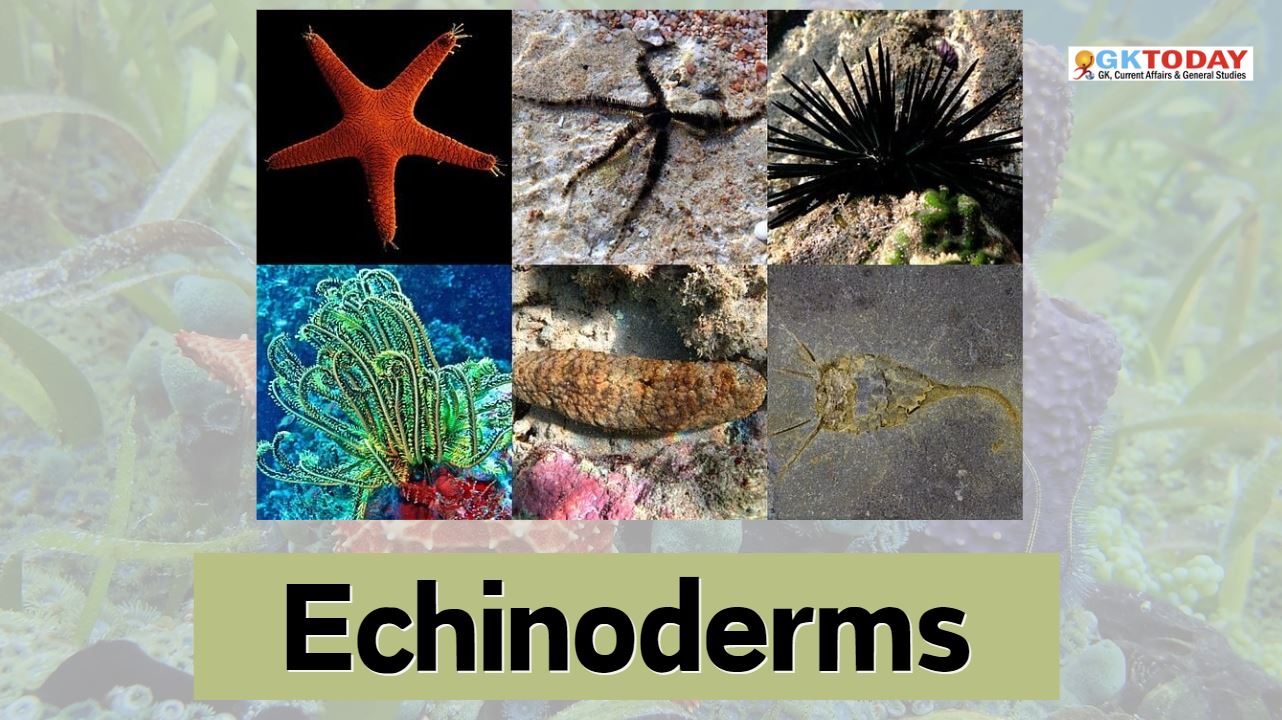Echinoderms
Members of Echinodermata (Spiny bodied) have an endoskeleton of calcareous ossicles. Starfish, sea cucumbers (holothurians), sea urchins and brittle stars are examples of echinoderms. All echinoderms are marine animals. They live in salt water.

Salient notes on Echinoderms
Thorny Animals
In Latin, Echino means spiny. Echinoderms, as their name indicates are creatures with spines that stick out from an endoskeleton. Their endoskeleton is made of calcareous plaques that, in addition to spines, contain pedicellaria, small pincers used to clean the body and to help capture prey.
They suck their prey
The system that allows echinoderms to move and to attach to substrates is called the ambulacral system. In these animals, water enters through a structure called the madreporite, passes through channels and reaches the ambulacral feet along the under surface of the body. In the ambulacral region in contact with the substrate, there are tube feet which empty and fill with water, thus acting as suckers. The ambulacral hydrovascular system also carries out the tasks of circulatory and respiratory system.
Pentaradial Symmetry
Adult echinoderms have Pentaradial symmetry; the radial symmetry in these animals is present only in adults.
Aristotle’s Lantern
Sea urchins have a teeth-like structure attached to the mouth and made of five teeth connected to ossicles and muscle fibers. This structure, known as Aristotle’s lantern, is use to scratch food, mainly algae, from marine rocks.


